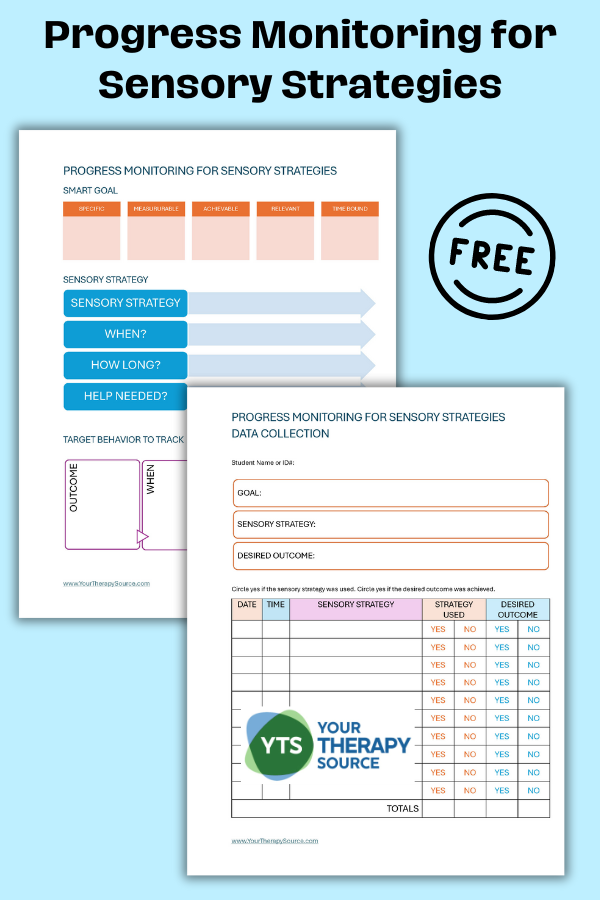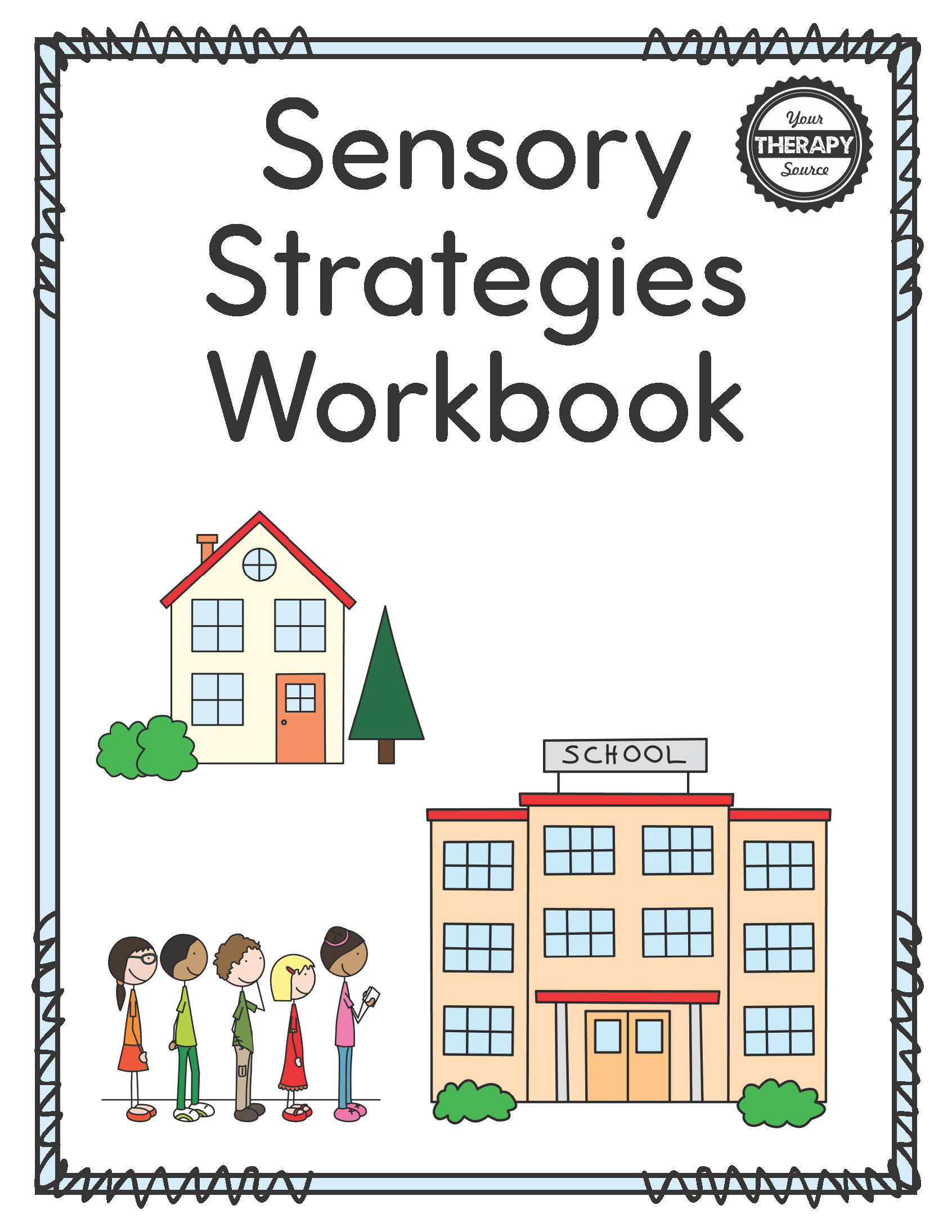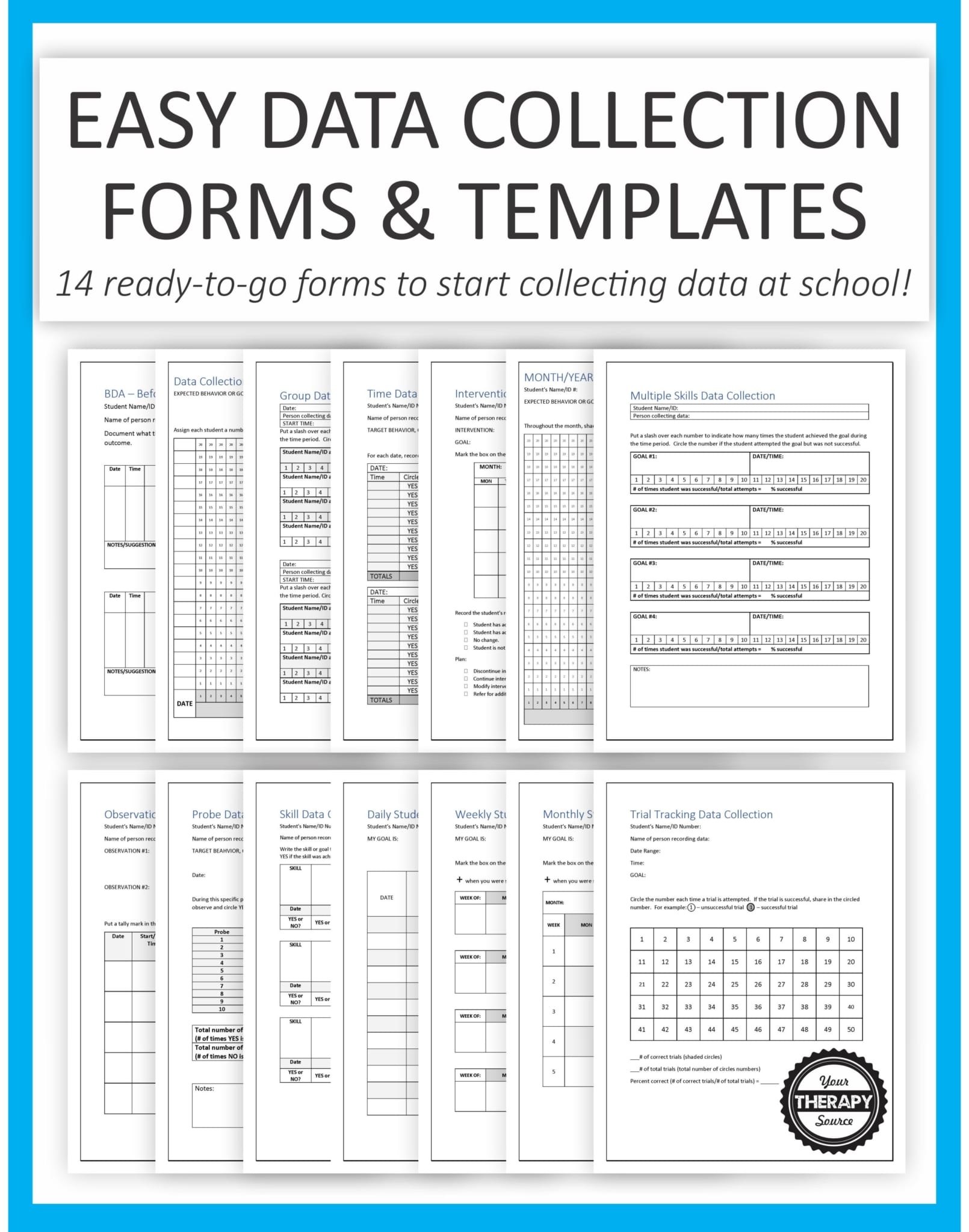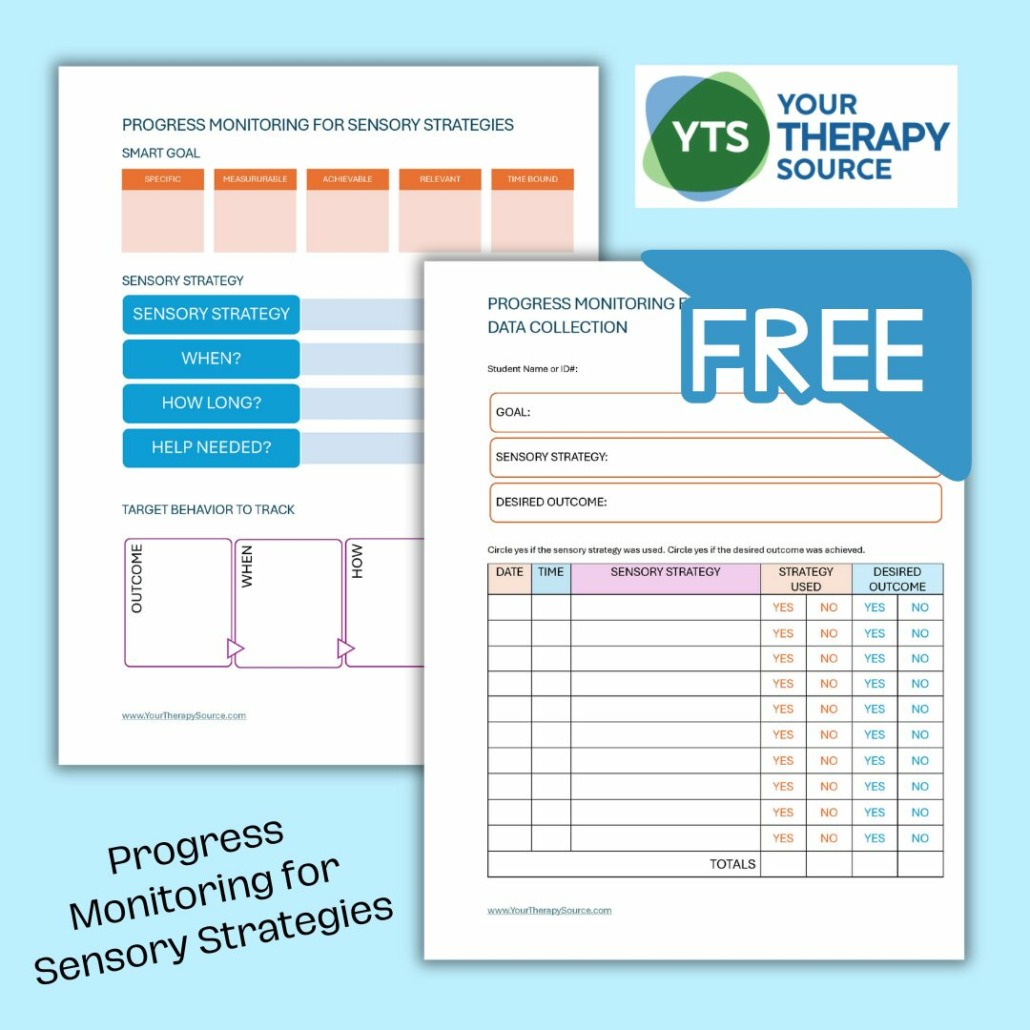Progress Monitoring Sensory Strategies in the Classroom

In the inclusive landscape of today’s classrooms, monitoring the progress of sensory strategies plays a crucial role in supporting diverse learners. Effective collaboration between educators and Occupational Therapy Practitioners (OTPs) is central to this approach, allowing for the design and implementation of personalized sensory interventions. This process begins with a thorough assessment of each student’s sensory needs, guided by the expertise of OTPs in daily living, fine motor, and sensory functions. By setting specific, measurable goals, educators and therapists can create interventions that are closely aligned with students’ individual needs, enhancing their ability to participate and succeed in the classroom environment. Utilizing a data-driven approach for ongoing evaluation ensures that strategies remain responsive and effective, adapting to the changing needs and responses of students over time. This methodical approach to sensory strategy implementation underscores the importance of adaptability and personalized support in fostering an educational environment where all students can thrive. You can download a FREE data tracking worksheet to help you get started with Progress Monitoring Sensory Strategies in the Classroom.
Strategy 1: Collaborate with an Occupational Therapy Practitioner (OTP)
A critical step in supporting your students in the classroom is consulting with an occupational therapy provider if necessary.
- Understand the Role of an OTP: An OTP brings specialized expertise in daily living, fine motor, and sensory functions, playing a critical role in assessing and addressing the sensory needs of students.
- Consult an OTP: It’s essential to involve an OTP for students with sensory-related concerns. If not already available, schools should consider requesting a consultation to ensure these needs are met comprehensively.
- Evaluate Sensory Needs: In partnership with classroom teachers, OTPs conduct evaluations to identify students’ unique sensory processing needs, pinpointing what sensory inputs may need adjustment.
- Design Tailored Interventions: Following evaluation, OTPs recommend specific interventions, such as modifying the classroom to reduce sensory overload or introducing sensory-motor breaks to address the unique needs of each student.

Sensory Strategies Workbook
Strategy 2: Create Goals
Be very specific about what is the purpose of the sensory strategy. When you suggest this strategy, what is the overall goal or outcome for the student? Create a SMART goal.
- Identify Support Needs: Recognizing that students have varied needs across multiple domains is crucial for comprehensive support planning.
- Set Specific Goals: Collaboratively, the student’s support team defines specific, measurable goals that align with broader educational objectives, including any personalized education plans.
- Ensure Alignment with Intervention: Goals are designed to correspond directly with the sensory functions targeted by the interventions, ensuring they adequately address identified needs.
Strategy 3: Progress Monitoring
Sensory needs change on a daily basis at times. We always need to be monitoring a student’s needs and outcomes to best support them.
- Monitor Response to Interventions: Students’ responses to interventions can vary, necessitating ongoing monitoring to ascertain effectiveness and adjust as needed.
- Data-Driven Adjustments: Employing a systematic approach to collect data on student behavior and intervention outcomes enables the identification and implementation of necessary adjustments.
- Collect Baseline Data: Gathering initial data before starting interventions provides a benchmark for measuring progress and evaluating the interventions’ impact.
- Evaluate and Adjust: Regular review of collected data aids in assessing intervention success and making informed adjustments to optimize outcomes.
- Fading and Future Planning: Successful interventions may lead to a reduction in the intensity of monitoring, though continued oversight ensures sustained effectiveness.

Data Collection for Special Education Templates – EASY
Data Collection Examples for Sensory Strategies in the Classroom
If you need a template for how you can get started with progress monitoring sensory strategies in the classroom, you can download this template at the bottom of the post. These free forms include a two page pdf:
- Overview: This page is a template to help guide you to document –
- SMART goal – Specific, Measurable, Achievable, Relevant and Time Bound.
- Sensory Strategy – determine what strategy to use, when to use it, how long to use it, and will the student need help.
- Target Behavior – What is the desired outcome? When will it occur? How will it occur? Who will monitor it?
- Data Collection: Once you have created a specific plan for progress monitoring the sensory strategy in the classroom, this form will help you collect data. This will help you to make data driven decisions about the best sensory strategy to use.
Examples
The basic format has you create a SMART goal, the specifics of the sensory strategy and the target behavior to track. Here are some examples.
- SMART Goal: The student will remain seated during circle time for 2 minutes with less than two verbal prompts over three consecutive opportunities by the end of the month.
- Sensory Strategy: Provide proprioceptive input through weighted lap pads and scheduled sensory breaks 10 minutes before circle time.
- Target Behavior to Track: Seated attention during circle time is to be recorded by the classroom teacher using a timer and a tally chart for verbal prompts.
- SMART Goal: The student will complete their handwriting tasks with no more than one request for a break over a two-week period.
- Sensory Strategy: Use a slant board and pencil grips during handwriting tasks to enhance proprioceptive feedback, applied at the beginning of every handwriting session.
- Target Behavior to Track: Handwriting task completion without excessive break requests to be tracked by the occupational therapist using a daily observation log.
- SMART Goal: The student will engage in solo play activities for at least 15 minutes without exhibiting self-stimulatory behaviors, measured twice a week for a month.
- Sensory Strategy: Create a designated ‘sensory play area’ equipped with tactile and proprioceptive toys to be used for 15 minutes before solo play activities.
- Target Behavior to Track: Duration of solo play without self-stimulatory behaviors to be measured by the teaching assistant using a stopwatch and behavior checklist.
REFERENCE
Dynia, J. M., Walton, K. M., Sagester, G. M., Schmidt, E. K., & Tanner, K. J. (2023). Addressing Sensory Needs for Children With Autism Spectrum Disorder in the Classroom. Intervention in School and Clinic, 58(4), 257-263.
DOWNLOAD YOUR FREE PROGRESS MONITORING SENSORY STRATEGIES FORM
Effectively addressing the sensory needs of students requiring specific support necessitates a collaborative effort, primarily involving occupational therapy practitioners. By setting precise, goal-oriented strategies and employing a data-driven approach for monitoring and adjustments, educators can create an inclusive and supportive learning environment. Tailoring interventions to meet the individual needs of each student is paramount, moving away from a one-size-fits-all approach to foster an educational setting where every student has the opportunity to succeed.
Enter your email below to get access to the FREE data collection tool to help you make data driven decisions about what sensory strategies are working for your students.



